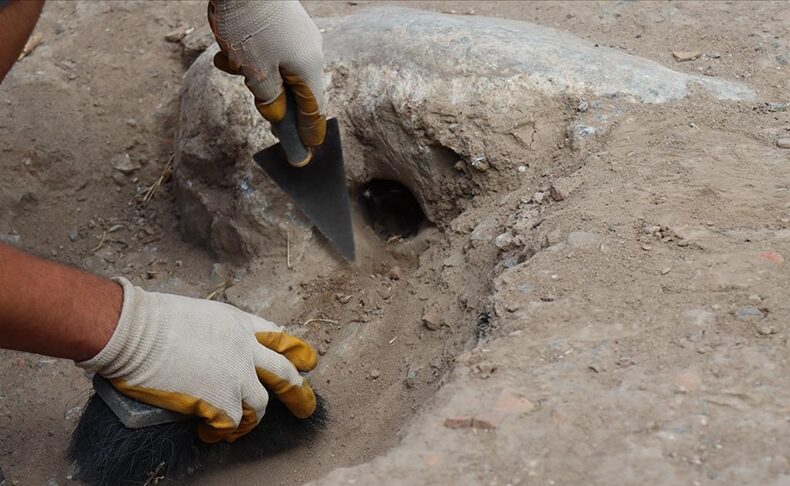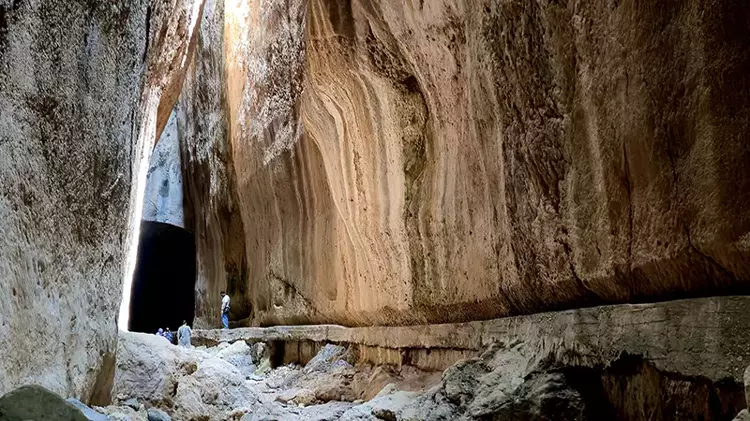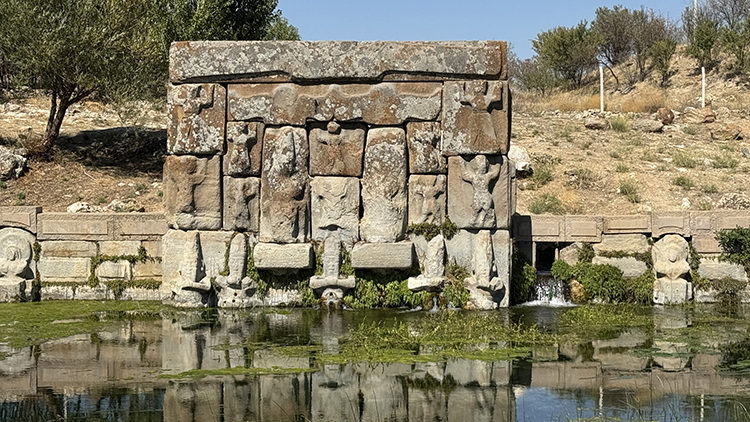
Roman-Era Settlement Unearthed in Adıyaman’s Mountains May Have Been a Large-Scale Wine Production Center
Archaeologists in southeastern Türkiye have identified a vast 4th-century Roman settlement in the mountains of Adıyaman’s Gerger district, revealing evidence of industrial-scale wine production and rural life on the empire’s eastern frontier. The discovery, made by the Adıyaman Museum Directorate near Oymaklı village, spans roughly 150 dönüms (15 hectares) of rugged terrain overlooking the Kahta

Bathonea Excavations Reveal Olive Oil and Wine Workshop near Küçükçekmece Lake
Archaeologists working at the ancient harbor city of Bathonea, located on the shores of Lake Küçükçekmece in Istanbul’s Avcılar district, have uncovered an olive oil and wine production complex dating to the Late Antiquity. The discovery was made within the framework of the “Heritage for the Future Project” (Geleceğe Miras Projesi), jointly carried out by

Six Aramaic Inscriptions Unearthed at Zernaki Tepe Reveal Forgotten Parthian Frontier in Eastern Türkiye
Archaeologists have uncovered six new Aramaic inscriptions at Zernaki Tepe, a 3,000-year-old ancient city in Van Province, eastern Türkiye. The discoveries — including three deliberately erased texts — illuminate a turbulent Parthian-era presence in Anatolia and the shifting power struggles between empires that once vied for control of the region. Located in the Yukarı Işıklı

The God Who Breathes in Stone: The Colossal Zeus Head of Aphrodisias
In the ancient city of Aphrodisias, located in Aydın’s Karacasu district, art and divinity once merged in marble. Renowned across the Roman Empire as one of its greatest centers of sculpture, Aphrodisias continues to astonish scholars with masterpieces that reveal the technical and emotional depth of ancient craftsmanship. Among its most breathtaking creations stands the

1,500-Year-Old Mosaic Unearthed Beneath a Historic Mill in Midyat May Reveal Early Byzantine Administrator’s Residence
A 1,500-year-old mosaic floor discovered beneath a historic mill in southeastern Türkiye’s Midyat district may have once belonged to an early Byzantine official named Tittos Domestikos.The find marks the first mosaic ever uncovered along the Midyat–Nusaybin corridor, a region better known for its ancient fortresses and caravanserais. The discovery was made in Sivrice (Beyazsu area),

2,500-Year-Old Idol Unearthed in Armenia’s Urartian Fortress May Reveal Secrets of a Vanished Faith
Archaeologists have uncovered a mysterious 2,500-year-old idol carved from volcanic stone inside the ancient Urartian fortress of Argishtikhinili, Armenia — a city once ruled by the kings of Urartu. The figurine, preserved beside a stone chest within a Late Iron Age house, is believed to have served a protective or ritual function, shedding new light

Marble-Paved Roads and Ancient Sewers Unearthed at the Roman Theater of Nicaea — Site of the First Christian Council
Archaeologists have uncovered marble-paved roads and a remarkably well-preserved sewage system at the western sector of the 2,000-year-old Roman Theater of Nicaea (modern-day İznik, Turkey) — the ancient city that hosted the First Council of Nicaea in AD 325, a defining event in early Christian history. The excavations are conducted under the İznik Museum Directorate

3,000-Year-Old Public Building Unearthed in Soğmatar, the Sacred City of the Moon God Sin
Archaeologists in southeastern Türkiye have unearthed a 3,000-year-old public building in Soğmatar, an ancient sanctuary dedicated to the Moon God Sin. The discovery, made under the Ministry of Culture and Tourism’s “Heritage for the Future Project”, pushes the history of the site back to the Neo-Assyrian period, revealing new layers in the spiritual and administrative

A Roman Marvel Carved by Hundreds of Slaves: The Titus Tunnel and Beşikli Cave
In the coastal cliffs of Samandağ in southern Türkiye, a monumental trace of Roman power still cuts through the heart of the mountain. Known as the Titus Tunnel, this massive hand-carved channel stands as both a triumph of Roman engineering and a silent testimony to the thousands of slaves and prisoners who shaped it nearly

The 3,200-Year-Old Hittite Water Monument Still Flows Despite Drought: Eflatunpınar Defies Time
In the district of Beyşehir in Konya, central Türkiye, the Eflatunpınar Hittite Water Monument, commissioned by King Tuthaliya IV around 1200 BCE, continues to flow after 3,200 years — a striking testament to ancient Anatolian engineering that still resists modern drought. Built directly over a natural spring, the monument combines sophisticated hydraulic planning with deeply
